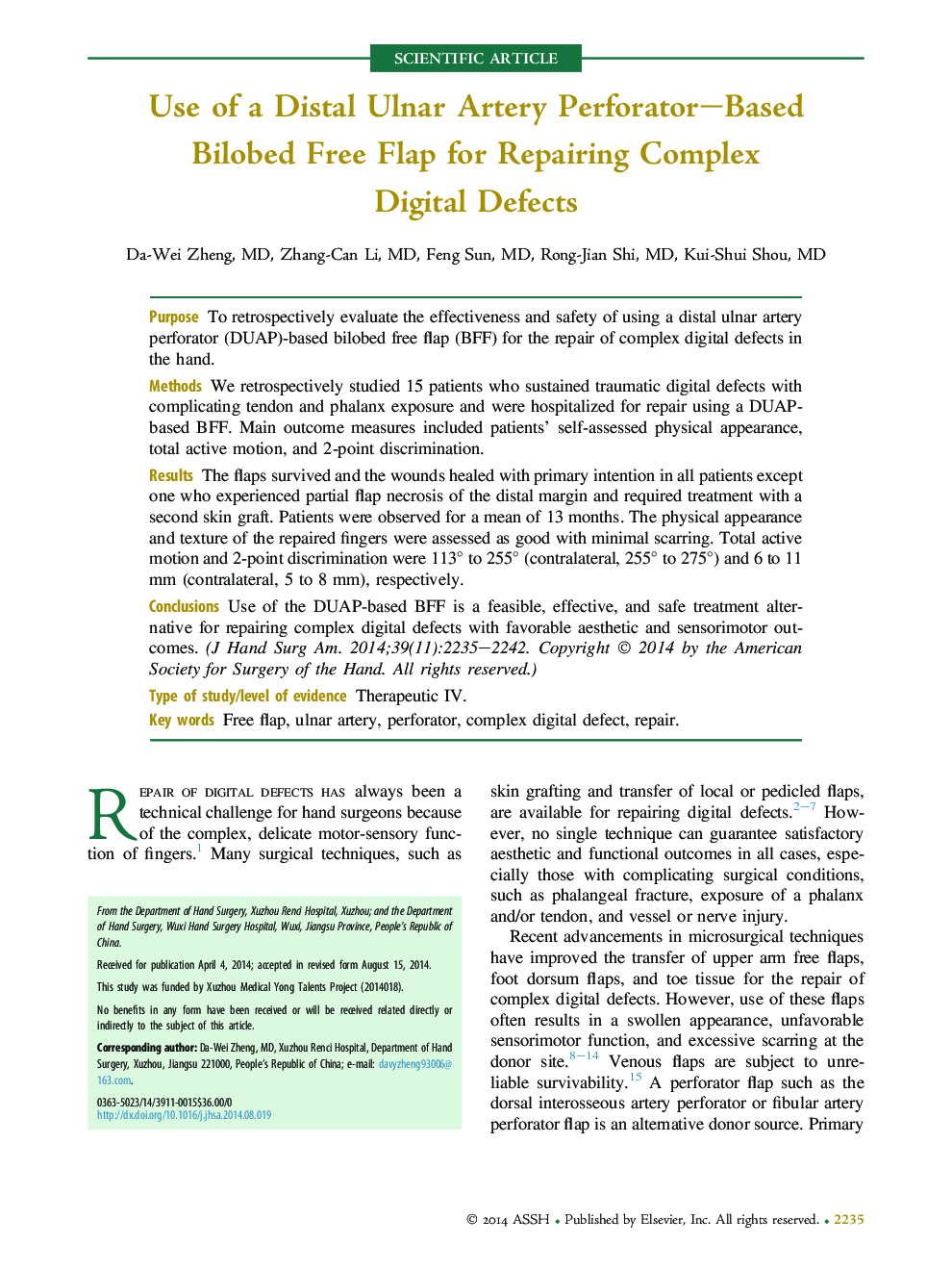| Article ID | Journal | Published Year | Pages | File Type |
|---|---|---|---|---|
| 4067398 | The Journal of Hand Surgery | 2014 | 8 Pages |
PurposeTo retrospectively evaluate the effectiveness and safety of using a distal ulnar artery perforator (DUAP)-based bilobed free flap (BFF) for the repair of complex digital defects in the hand.MethodsWe retrospectively studied 15 patients who sustained traumatic digital defects with complicating tendon and phalanx exposure and were hospitalized for repair using a DUAP-based BFF. Main outcome measures included patients’ self-assessed physical appearance, total active motion, and 2-point discrimination.ResultsThe flaps survived and the wounds healed with primary intention in all patients except one who experienced partial flap necrosis of the distal margin and required treatment with a second skin graft. Patients were observed for a mean of 13 months. The physical appearance and texture of the repaired fingers were assessed as good with minimal scarring. Total active motion and 2-point discrimination were 113° to 255° (contralateral, 255° to 275°) and 6 to 11 mm (contralateral, 5 to 8 mm), respectively.ConclusionsUse of the DUAP-based BFF is a feasible, effective, and safe treatment alternative for repairing complex digital defects with favorable aesthetic and sensorimotor outcomes.Type of study/level of evidenceTherapeutic IV.
